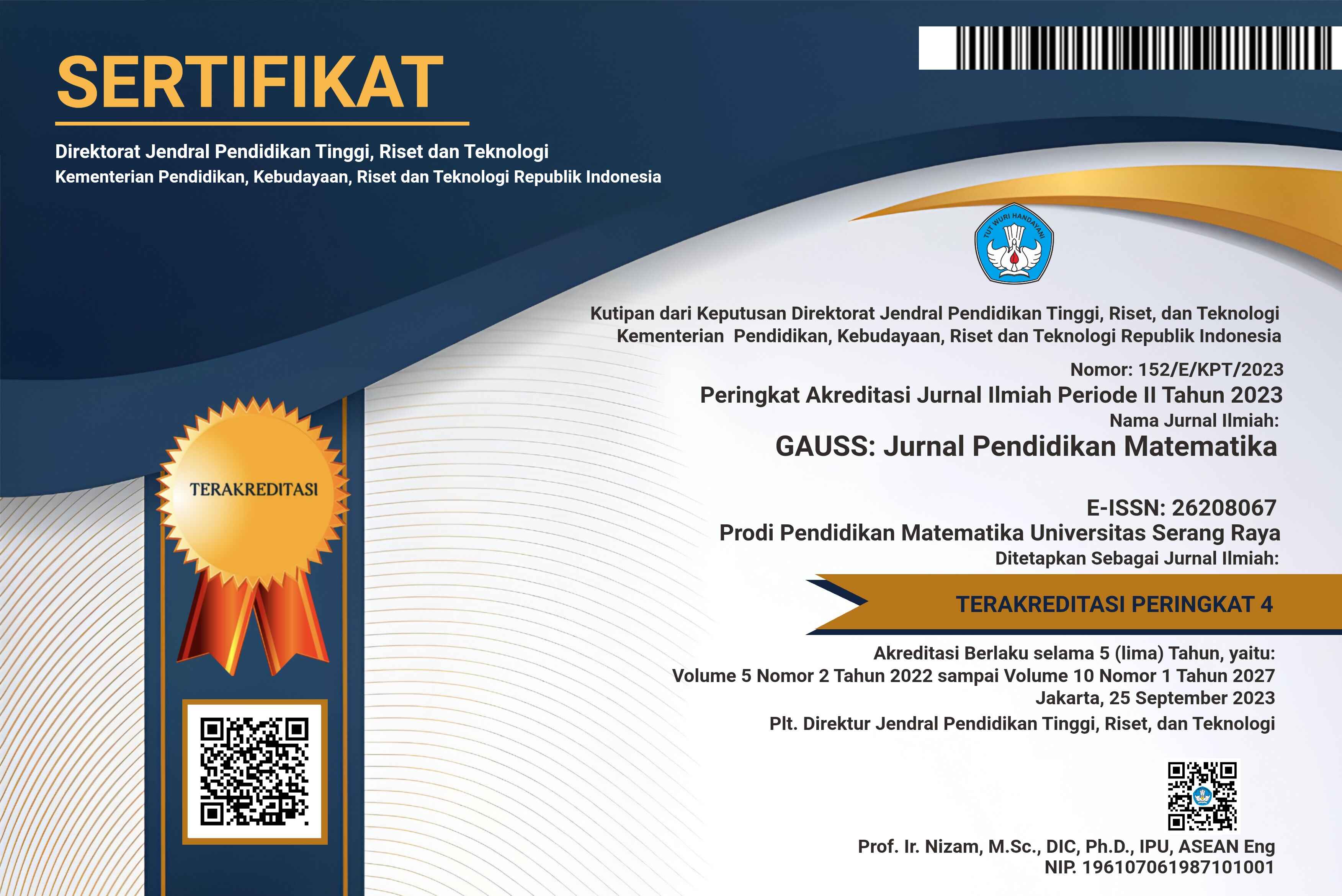Penerapan Metode Multivariate Adaptive Regression Spline untuk Memahami Dinamika Kemiskinan di Indonesia
DOI:
https://doi.org/10.30656/gauss.v8i1.10569Abstrak
Abstrak
Kemiskinan masih menjadi tantangan besar bagi pembangunan di negara berkembang, khususnya Indonesia. Berbagai faktor seperti pendidikan, kesehatan dan pendapatan masyarakat diketahui mempengaruhi tingkat kemiskinan, namun hubungan antar faktor tidak sederhana. Studi ini dilakukan untuk memprediksi Presentase Penduduk Miskin Di Indonesia berdasarkan faktor sosial ekonomi menggunakan metode Mulitivariate Adaptive Regression Spline yang mampu menangkap hubungan nonlinear dan interaksi antar variabel. Penelitian menggunakan Data dan Informasi Kemiskinan Kab/Kota di Indonesia Tahun 2023 dari publikasi Badan Pusat Statistik (BPS) yang telah melalui proses Pre-processing data. Model terbaik dibangun dari 0.8 data training dan 0.2 data testing dengan kombinasi BF=26, MI=3, MO=1 dengan Generalized Cross Validation (GCV) terkecil sebesar 0.160211 dan dari 13 variabel prediktor yang diteliti menunjukkan bahwa variabel Persentase Pengeluaran Rata-Rata per Orang untuk Makanan Kategori Miskin dan Tidak Miskin (X5) dan variabel Persentase Pengeluaran Rata-Rata per Orang untuk Makanan Kategori Miskin dan Tidak Miskin (X6) yang mempunyai skor tertinggi sebesar 100% untuk menurunkan nilai GCV model dan menurunkan Residual Sum of Squares (RSS) pada model. Selain itu, model MARS mampu menjelaskan variasi tingkat kemiskinan dengan nilai R-squared sebesar 83,7% yang mengidentifikasikan prediksi cukup akurat.
Kata kunci : Kemiskinan, MARS, GCVAbstract
Poverty remains a major challenge for development in developing countries, especially Indonesia. Various factors such as education, health and income are known to affect the poverty rate, but the relationship between factors is not simple. This study aims to predict the percentage of poor people in Indonesia based on socioeconomic factors using the Mulitivariate Adaptive Regression Spline method which is able to capture nonlinear relationships and interactions between variables. The research uses data and information on poverty in districts / cities in Indonesia in 2023 obtained from the Central Statistics Agency (BPS) which has gone through a process of cleaning, standardisation and handling outliers. The best model was built from 0.8 training data and 0.2 testing data with a combination of BF=26, MI=3, MO=1 with the smallest Generalised Cross Validation (GCV) of 0.160211 and of the 13 predictor variables studied showed that the variable Percentage of Average Expenditure per Person on Food for Poor and Non-Poor Categories (X5) and the variable Percentage of Average Expenditure per Person on Food for Poor and Non-Poor Categories (X6) which had the highest score of 100% to reduce the GCV value of the model and reduce the Residual Sum of Squares (RSS) in the model. In addition, the MARS model is able to explain the variation in poverty rates with an R-squared value of 83.7%, which identifies a fairly accurate prediction.
Keywords: Poverty, MARS, GCV
Unduhan
Diterbitkan
Terbitan
Bagian
Lisensi
Hak Cipta (c) 2025 Nurviqotun Khasanah, Zilrahmi, Syafriandi

Artikel ini berlisensiCreative Commons Attribution-NonCommercial-ShareAlike 4.0 International License.
Authors who publish articles in GAUSS : JURNAL PENDIDIKAN MATEMATIKA agree to the following terms:
- Authors retain copyright and grant the journal the right of first publication with the work simultaneously licensed under a Creative Commons Attribution-ShareAlike 4.0 International License that allows others to share the work with an acknowledgment of the work's authorship and initial publication in this journal.
- Authors are able to enter into separate, additional contractual arrangements for the non-exclusive distribution of the journal's published version of the work (e.g., post it to an institutional repository or publish it in a book), with an acknowledgment of its initial publication in this journal.
- Authors are permitted and encouraged to post their work online (e.g., in institutional repositories or on their website) before and during the submission process, as it can lead to productive exchanges, as well as earlier and greater citation of published work (See The Effect of Open Access).




